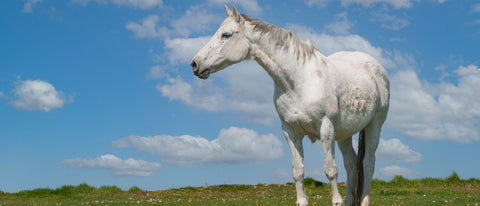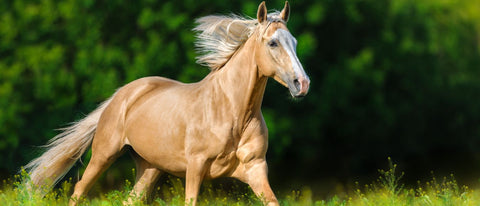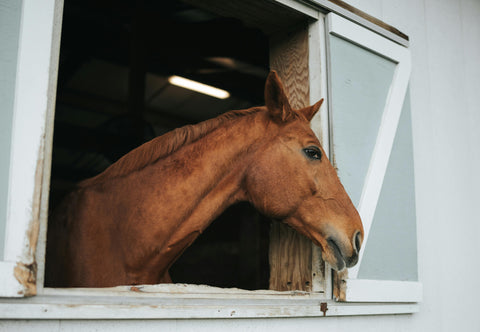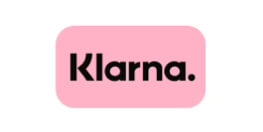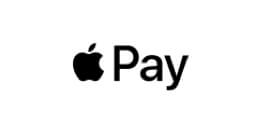
Florian ist aufgewachsen auf einem Bauernhof. Umgeben von Pferden, entdeckte er früh seine Faszination für diese majestätischen Tiere. Inspiriert von seiner reitbegeisterten Mutter, entwickelte er das Nahrungsergänzungmittel - Pferdegold. Seine tiefe Verbundenheit zur Natur und die leidenschaftliche Hingabe zu Pferden trieben ihn an, sein Unternehmen zu gründen.
Cribbing is a behavioral disorder in horses, often triggered by stress, boredom, or inappropriate housing. There are two main forms: cribbing on the ground, in which the horse swallows air with its incisors on a solid object, and free cribbing, in which it cribs without touching the ground.
Both variants can cause long-term health problems, including excessive tooth wear, tension in the neck muscles, and digestive problems.
What is cribbing in horses?
Cribbing in horses is a stereotypical behavior in which the horse repeatedly presses its incisors against solid objects while jerking its head back. This behavior occurs in two forms:
- When cribbing, the horse rests its upper incisors on a surface,
- while in free-coping the head is moved without firm contact.
Both forms can be understood as a reaction to stress or understimulation and often manifest themselves in a noticeable belch when air is drawn into the esophagus.
Why do horses crib?
The reasons why a horse cribs are complex. Often the increasing stress caused by
- changing environments,
- pressure to perform
- or social isolation, plays a crucial role.
But boredom , for example in pessimistic box keeping without sufficient exercise and mental stimulation , also contributes to the development of this behavioral disorder.
In addition, inappropriate housing combined with inadequate feeding and a lack of roughage can increase the urge to crib.

Perfect for your horse: Pferdegold® supplementary feed!
These specially developed supplements support your horse's diet and provide it with natural nutrients. Made in Germany, grain-free and drug-free, they come with a 30-day money-back guarantee.
Try it now!Possible triggers for cribbing
The following factors can promote cribbing in horses:
- Stress: Changing environments, exams, and social isolation can significantly increase stress levels.
- Boredom: Lack of activity and insufficient exercise, especially when kept in a box, lead to understimulation.
- Inappropriate housing: A lack of grazing and contact with conspecifics promote stereotypical behavior patterns.
- Genetic factors: Certain horse breeds are more susceptible to this behavior.
- Feeding problems: An unbalanced diet with too little roughage can cause stomach problems and increase cribbing.
These diverse causes make it clear that there is not just one single factor responsible for cribbing – it is usually an interaction of several factors.
Consequences of cribbing
Repeated cribbing can lead to serious health problems in the long term:
- Tooth damage: The constant pressure wears down the incisors, which can cause misalignment and eating problems.
- Muscular problems: Repeated head movements lead to tension and thickening of the neck muscles.
- Stomach ulcers: Excessive swallowing of air can promote the development of stomach ulcers , which can lead to indigestion and weight loss.
These health risks make it clear that early intervention is essential to ensure the horse's long-term well-being.
You can’t stop cribbing – but you can make it easier for the horse
Cribbing is a behavior that, in most cases, cannot be completely eliminated . Rather than treating the symptom, it is more important to understand the causes and provide the horse with the best possible support.
- Reduce stress: Often, cribbing is caused by boredom, frustration, or stress. A well-thought-out daily routine with plenty of exercise, social interaction, and varied activities can help.
- Consider stomach and feeding: Many croakers have stomach problems or sensitive digestion. A customized diet with sufficient roughage and stomach-friendly supplements can provide relief.
- Take the pressure off: Horses that crib should not be punished with mechanical aids like cribbing straps. Instead, it helps to create an environment that makes the horse feel comfortable.
The goal is not to prevent cribbing at all costs, but to enable the horse to live a life in which it has fewer reasons to display this behavior excessively. With proper housing, feeding, and support, life can be made significantly more pleasant for cribbing horses.

Perfect for your horse: Pferdegold® supplementary feed!
These specially developed supplements support your horse's diet and provide it with natural nutrients. Made in Germany, grain-free and drug-free, they come with a 30-day money-back guarantee.
Try it now!Is cribbing in horses a warranty defect?
In the past, cribbing in horses was often considered a defect in the horse's warranty. However, since 2002, this behavior has no longer been legally classified as a defect.
However, the presence of increased cribbing behavior can reduce the economic and emotional value of a horse, as it may indicate long-term health and behavioral problems.
Conclusion
In summary, cribbing in horses is a complex problem that affects not only the health but also the behavior of the horse.
You can address this problem sustainably by specifically optimizing the conditions of keeping animals, offering varied activities, and supporting the use of nature-based products.
FAQ
What is cribbing in horses?
Cribbing in horses refers to a stereotypical behavior in which the horse presses its incisors against solid objects and pulls its head back.
Why does a horse start cribbing?
The main triggers are stress, boredom, and inadequate species-appropriate housing and feeding. Genetic factors can also play a role.
Is cribbing contagious in horses?
No, cribbing is a behavioral phenomenon that is not transmitted from one horse to another.
How can I prevent cribbing in my horse?
You can effectively prevent cribbing through species-appropriate housing, sufficient exercise, social contact and a balanced diet with enough roughage.
🐴 Would you like to read more about health:
